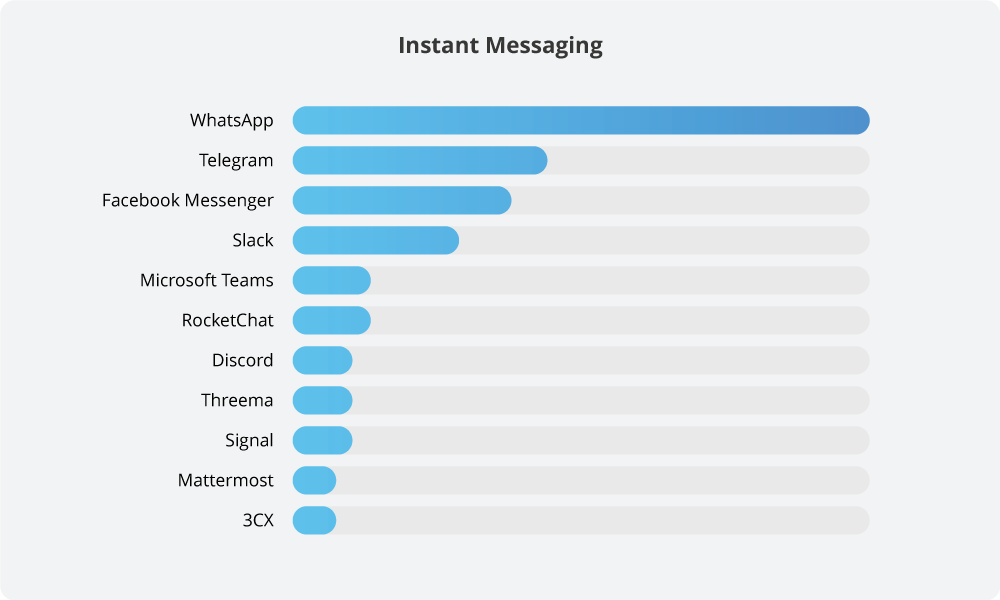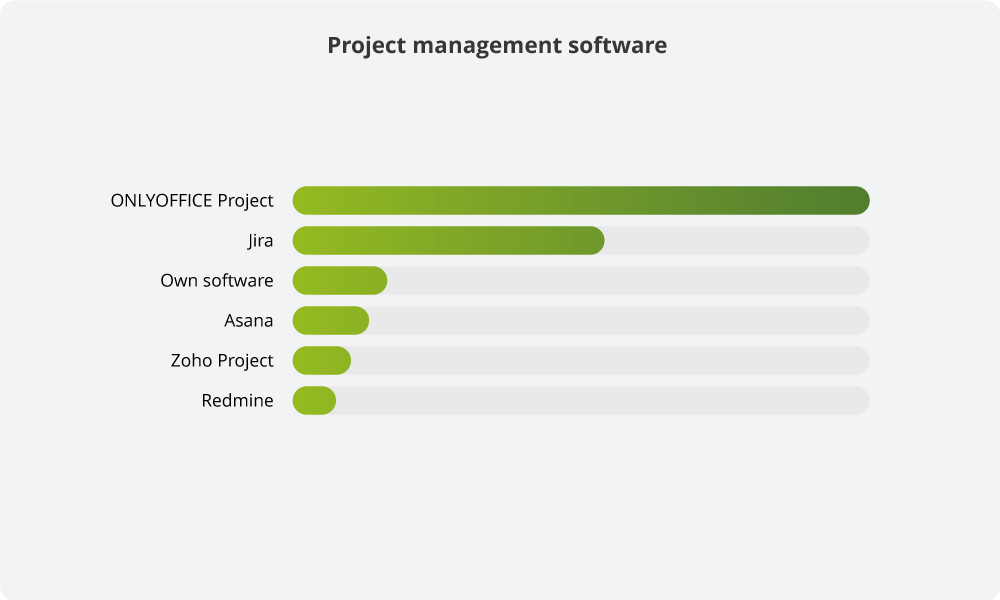- Blog /
Collaboration in 2020: a mini survey by ONLYOFFICE
Hello everyone!
A while ago, we couldn’t resist the curiosity and surveyed our users and community about their remote work and online collaboration in 2020. Sure enough, this year brought some peculiar results. For example 46% of respondents are feeling more productive in their home office, better video conferencing seems to be the top wish for 2021, and some people actually use Google Docs for project management. Jump in to find out more.
About the survey
Title: Collaboration in 2020
Sample: 189 people
Audience portrait: ONLYOFFICE users and community
Objectives: To understand the effects of remote working in 2020 and to find out which essential online collaboration tools are currently the most popular.
Switch to remote work
According to our findings, 86% of respondents have been working remotely this year, of whom 59% converted over the pandemic and 41% are working remotely in general. 7% of all respondents stayed in the office though.
Companies are constantly analyzing productivity of their stuff, especially in the times of change. But how do employees feel about themselves? Most of the surveyed users appear to be quite confident about a positive effect of WFH: 46% of respondents think they became more productive. 41%, however, didn’t see much difference, and only 13% presume that their productivity dropped.
Most popular collaboration tools
We asked people what types of online collaboration they perform in their daily tasks, breaking the tools into eight categories: videoconferencing, project and task management, instant text and audio messaging, document co-editing, spreadsheet co-editing, presentation co-editing, Collaborative design and, coding collaboration.
Generally, the findings are not much of a surprise, but there is still some interesting data. For example, videoconferencing and appears to be more fundamental than instant messaging (80% against 61% respectively), while only 51% of the respondents are used to managing projects and tasks online.
In content collaboration, talking about three main types of office files, the leading position is obviously taken by document co-editing (67%). At the same time, 44% of respondents collaborate on spreadsheets in their work, and solid also 24% create presentations collaboratively.
Curious about other spheres of collaboration, we found out that as many as 18% use collaborative design tools, and 16% write code together online.
Another question was: if one of these tools disappears tomorrow, which one would be unimaginable to live without? At this point videoconferencing still proved to be the most essential (43% of votes). Instant messaging was supported by 21%, and document co-editing – only by 15% of people. In project and task management, 91% seem to be still ready to do it the old way: only 9% of people supported this option.
For Spreadsheet co-editing, Presentation co-editing, Collaborative design tools, Coding collaboration the support is non-significant.
Collaboration software score
In this part of the survey, we asked our respondents what software they stick to in each category, if any at all. See below the ranking of the top 7 in each case (some share the same rank), and the list of other options that showed insignificant presence but were mentioned. Some people named more than one option, so there is some overlap in the results.
There’s a human factor, so we do not guarantee that all software mentioned in the answers is primarily built for category’s purpose. Neither we are sure that by mentioning a product the user didn’t actually mean some third-party component of it.
Videoconferencing software:
- Zoom (56%)
- Microsoft Teams and Skype (33%)
- Jitsi (26%)
- Google Meets (20%)
- Cisco Webex (10%)
- Nextcloud Talk (6%)
- Signal and BigBlueButton (5%)
Other responses: ClickMeeting, Discord, FaceTime, GoToMeeting, 3CX, Slack, Pexip, Whereby, Vectera, eyeson, Avaya, Kopano Meet, Amazon Chime, letsmeet.hu, kMeet, Telegram.
Instant messaging software:
- WhatsApp (32%)
- Telegram (14%)
- Facebook Messenger (12%)
- Slack (9%)
- Microsoft Teams and RocketChat (4%)
- Discord, Threema and Signal (3%)
- Mattermost and 3CX (2%)
Other responses: Viber, Jira, Softros, Google Classroom, Line, Spark, Nextcloud Talk, Zoom, Wire, Zimbra, Amazon Chime, HCL, Just Social.
Project management software:
- ONLYOFFICE Projects (32%)
- Jira (17%)
- Own software (5%)
- Asana and Zoho Projects (4%)
- Redmine (3%)
- Odoo (2%)
Other responses in project management category showed the results of 1% or less. Some of them are: Basecamp, Google Docs, Sharepoint List, Ninox, Dropbox, Conceptboard, 1C, Pagico, Active Collab, Zenkit, Leantime, GLPI, Outlook, and Ryver.
We find it curious that as many as 5% of respondents mentioned that they prefer custom software to use for managing projects and tasks instead of relying on the existing options. We are new to this knowledge, and for sure would like to know more about such practice. Please tell us in comments if you are using your own custom software for PM and what benefits does it bring.
Collaborative office:
- ONLYOFFICE (55%)
- Office Online (46%)
- Google Docs (38%)
- WPS Office (9%)
- Collabora Online (7%)
- Zoho Docs (3%)
- CryptPad, Confluence, Microsoft Office (desktop), iWork (2%)
Other responses: Bitrix 24, Lotus, Quip.
The overlap here is considerable, from which we conclude that many people still have to work with two or even three suites. They still share documents externally, keep using multiple products to have all the necessary features, or need better compatibility with different formats for each task.
Collaborative Design software:
- InVision (21%)
- Red Pen (6%)
- ViewFlux (5%)
- Figma and GoVisually (4%)
- Draw.io (3%)
- Adobe XD (2%)
Other responses showed the results of 1% or less, and included: Mural, Moodle, Google (no service mentioned), Miro, Rhino.
With all respect to the diversity of the sphere of visual design, unlike other software groups this one shows one distinct leader. Among those respondents who use collaborative design instruments at all, InVision is preferred by 42% while Red Pen that comes right after is preferred by only 12% of respondents.
A letter to Santa: what tools do we crave?
Almost all collaboration tools we can imagine already exist in some form. But there’s no harm in dreaming a little, ad one more task was to name a non-existent collaboration tool you wish to be launched in 2021.
When it comes to improving what already exists, several people mentioned that they still lack appropriate software for videoconferencing, collaboration on images and videos online, and digital whiteboarding tools.
The list of new concepts includes (original wording preserved):
- A tool for creating fillable PDFs online;
- Tree branching tool;
- Something simple to manage agile teams;
- Digital transformation tool;
- Better digital whiteboarding tool;
- Process management / form escalation tool / approval tool;
- Collaboration tool for eating granny’s dishes.
Use comments below to discuss the results, and don’t forget to share our findings with friends and colleagues. Reach us on Twitter at @only_office.
Create your free ONLYOFFICE account
View, edit and collaborate on docs, sheets, slides, forms, and PDF files online.












